Scientist of the Day - Alfred Russel Wallace
Alfred Russel Wallace, a Welsh naturalist, died Nov. 7, 1913, at the age of 90. We wrote a post on Wallace almost 8 years ago, when this series was just getting started, and it was a decent post, but it was overly brief, as those early pieces tended to be. We did make the point that Wallace was the co-discoverer, with Charles Darwin, of evolution by natural selection, and that, unlike the well-heeled Darwin, he earned his living as a naturalist, selling exotica to dealers that in turn sold Wallace’s goods to stay-at-home collectors. Our post was illustrated with four lovely plates from Wallace's The Malay Archipelago (1869), a book almost as popular as Darwin's Voyage of the Beagle, as Darwin’s narrative would later be called. But we said nothing about the events of the 1850s, when Wallace inadvertently prodded Darwin into action, twice. The Origin of Species might not have been written at all, without the stimulus provided by Wallace. We are going to tell this story today, and on a later occasion, we will come back to look at Wallace the evolutionist of the 1860s and 1870s, since he went off in quite a different direction from Darwin, believing that natural selection could never account for the human species. We also need to say something about Wallace’s work in biogeography and his discovery of “Wallace’s line.”
Wallace entered Darwin’s world in 1855, when he published an article in the Annals and Magazine of Natural History. Wallace had been in Indonesia for two years (the beginning of an eight-year sojourn), and in his paper, he claimed to have discovered a fundamental law of nature, namely that "every species has come into existence coincident both in space and time with a closely allied species," in effect observing that there is a succession of types in the animal and plant world – that species are connected, chronologically and geographically.
Darwin read the article and realized that Wallace had observed what Darwin himself had first noticed in 1837, and he further understood that Wallace was close to stumbling on natural selection, which Darwin had been sitting on since 1838. With another runner now in the race, Darwin decided it was time to get his ideas into print, and he began work on a massive treatise on evolution by natural selection that we call “The Big Book,” since it was never published with a title of its own. Work proceeded slowly, because Darwin was being very thorough, and he had hardly gotten beyond the subject of artificial selection when he heard from Wallace again, on June 18, 1858.
This time Wallace wrote Darwin directly, and enclosed a manuscript he had written, asking Darwin if he approved of the argument, and if so, wondering if Darwin could forward it to a suitable journal for publication Darwin read the short article, called “On the Tendency of Varieties to depart indefinitely from the Original Type,�” and his heart must have sunk to the floor, for Wallace now had the whole enchilada, having come to exactly the same conclusions that Darwin had 14 years earlier, when he wrote down an outline of his theory of evolution by natural selection.
On the advice of friends, Darwin cobbled together a short paper of his own, from writings he had already circulated, and the Darwin-Wallace papers were read at a meeting of the Linnean Society on July 1 and subsequently published in the Society’s journal; we show here the first page of the publication of the joint papers (third image) and the page where Darwin’s paper ends and Wallace’s begins (fourth image) More importantly, Darwin immediately dropped the Big Book project and wrote what he thought of as an abstract, which was published the next year as On the Origin of Species (1859).
Many scholars have maintained that Wallace got the short straw in all this – that the success of Darwin's Origin made most people forget Wallace’s important role in the history of evolutionary thought. But Wallace always maintained that credit was fairly given – that Darwin deserved the acclaim that he received. Wallace might actually have been sincere about that, because when his travel narrative, The Malay Archipelago, was published in 1869, it was dedicated to Darwin, "not only as a token of personal esteem and friendship, but also to express my deep admiration for his genius and his works" (fifth image). That certainly does not sound like the sentiment of a embittered rival.
In his 1973 televised series on the history of science, The Ascent of Man (which I still highly recommend), Jacob Bronowski called Wallace "the man from Porlock in reverse." I have always admired that phrase, because it seems uniquely appropriate as a descriptor for Wallace. When Samuel Taylor Coleridge in 1797 was writing down the verses to “Kubla Khan,” which he had composed in an opium-induced reverie, he was, he claimed, interrupted by “a person from Porlock,” asking for directions, and when he returned to his desk, he found the rest of the poem had deserted him. Wallace knocked twice on Darwin's door (metaphorically speaking, of course), first in 1855 and then in 1858, and instead of distracting Darwin, he goaded him into action, just the reverse of the man from Porlock for Coleridge.
We have identified only one contemporary original portrait of Wallace in our collections, one that was published in 1877 in Popular Science Monthly (first image). This shows a Wallace 20 years older than the man who was giving Darwin heartburn in the 1850s. So we also include a Wikipedia photo showing Wallace in 1862, taken from a book published in 1916 that is not in our collections (sixth image).
William B. Ashworth, Jr., Consultant for the History of Science, Linda Hall Library and Associate Professor emeritus, Department of History, University of Missouri-Kansas City. Comments or corrections are welcome; please direct to ashworthw@umkc.edu.

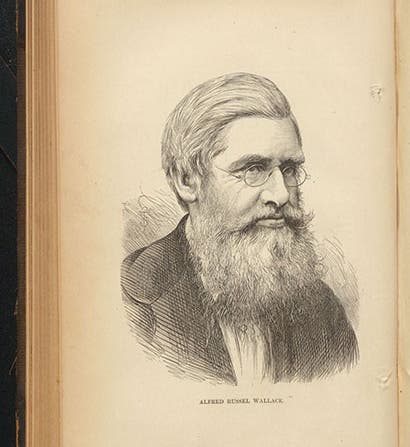
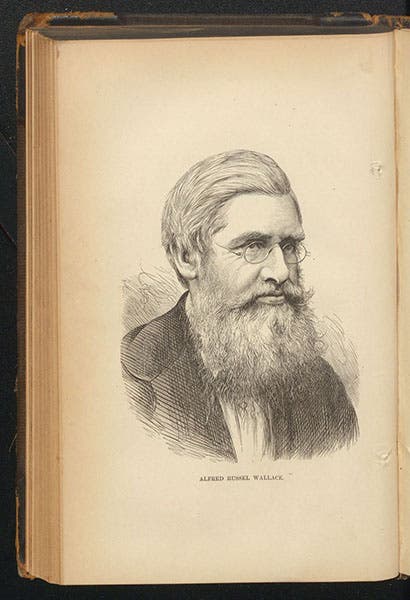
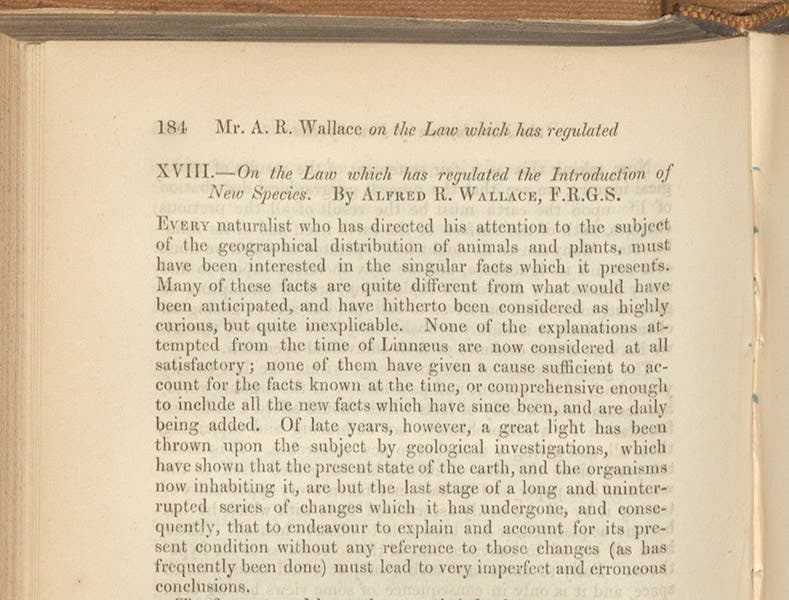
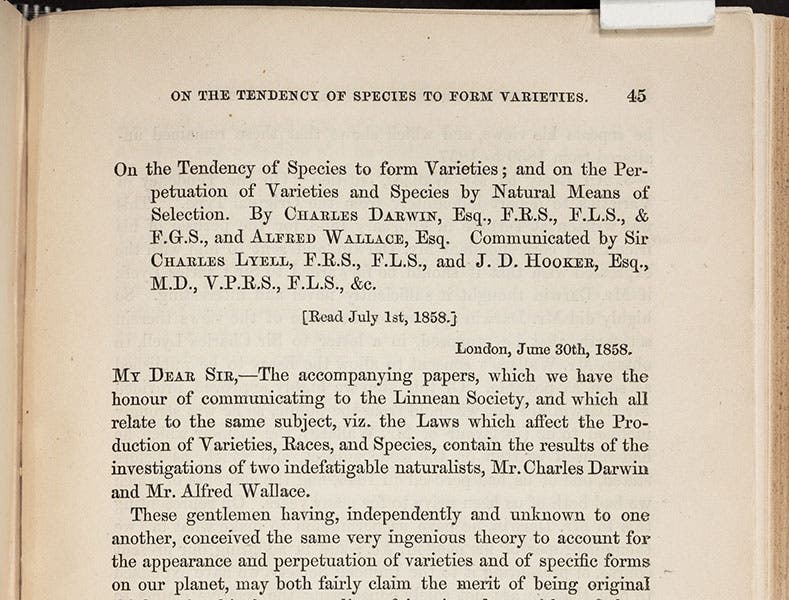
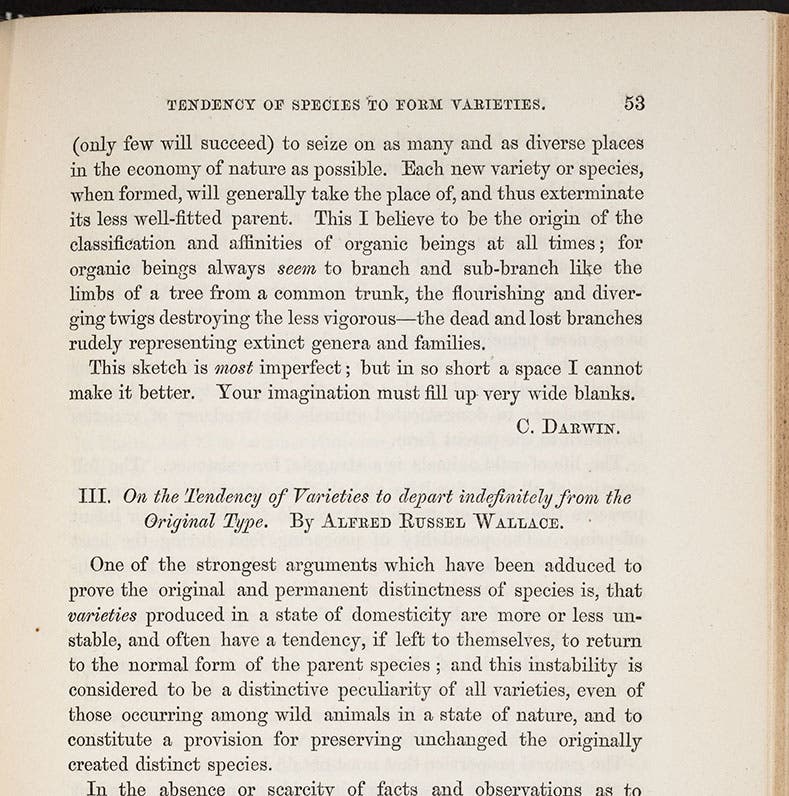

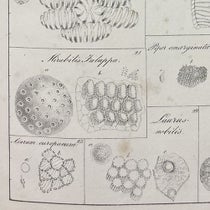
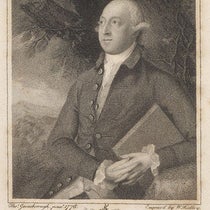


![Using an astrolabe to measure the depth of a well, woodcut in Elucidatio fabricae vsusq[ue] astrolabii, by Johannes Stöffler, 1513 (Linda Hall Library)](https://preview-assets-us-01.kc-usercontent.com:443/9dd25524-761a-000d-d79f-86a5086d4774/a998eb50-55d2-4a88-ace2-a50aa5fa86e7/Stoffler%201.jpg?w=210&h=210&auto=format&fit=crop)